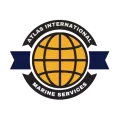European Maritime Industry: Environmental Performance is Now a Requirement

The European maritime industry is undergoing a significant transformation as environmental performance becomes a critical requirement.
This shift is driven by new regulations and initiatives aimed at reducing greenhouse gas (GHG) emissions and promoting sustainable practices.
This blog explores the key aspects of these changes and their implications for the industry.
Regulatory Framework and Targets
The European Commission has introduced the “Fit for 55” package, which aims to reduce emissions by 55% by 2030 and achieve climate neutrality by 2050.
This package includes the FuelEU Maritime regulation, which targets an 80% reduction in the GHG intensity of maritime fuels by 2050.
The regulation sets a timeline for reducing GHG intensity, starting with a 2% reduction in 2025 and increasing to 75% by 2050.
Emissions and Environmental Impact
Maritime transport accounts for 13.5% of EU transport emissions, highlighting the sector’s significant environmental impact.
The industry contributes to air pollution, water pollution, and underwater noise pollution, which affect marine ecosystems and human health.
Efforts to decarbonize the sector include the adoption of alternative fuels and technologies, such as biofuels, batteries, hydrogen, and ammonia.
Onshore Power Supply and Compliance
To further reduce emissions, vessels are required to connect to onshore power supplies while moored, unless they use zero-emission technologies.
This measure aims to minimize emissions from ships at ports, contributing to cleaner air and reduced noise pollution.

Financial Implications and Incentives
The inclusion of maritime emissions in the EU Emissions Trading System (ETS) from 2023 onwards increases financial burdens for ship operators due to higher taxes and compliance costs.
However, the FuelEU penalty system incentivizes compliance by using penalty funds to promote renewable and low-carbon fuels.
Technological and Practical Challenges
Despite the ambitious targets, achieving decarbonization within the proposed timelines poses challenges.
The availability and maturity of necessary technologies, as well as the practical implementation of decarbonization measures, remain uncertain.
Investments in alternative fuels and energy-efficient propulsion systems are expected to rise as the industry adapts to these new requirements.
Global and Regional Efforts
The International Maritime Organization (IMO) has set a target to reduce emissions by at least 50% by 2050 compared to 2008 levels.
Regional and international efforts are crucial, as most shipping emissions occur on the open seas, beyond national borders.
The IMO’s new climate strategy aims for net-zero emissions by 2050, aligning with the EU’s goals.
In Summary,
The European maritime industry is at a pivotal moment as it embraces environmental performance as a requirement.
The regulatory framework, financial incentives, and technological advancements are driving the sector towards a more sustainable future.
However, achieving these ambitious targets will require continued collaboration and innovation across the industry.
Found this article interesting, and useful? Please feel free to interact, recommend and share.
If you have any questions about this topic or would like to discuss your own business needs, please contact us today!
European Maritime Industry: Environmental Performance is Now a Requirement Read More »
















